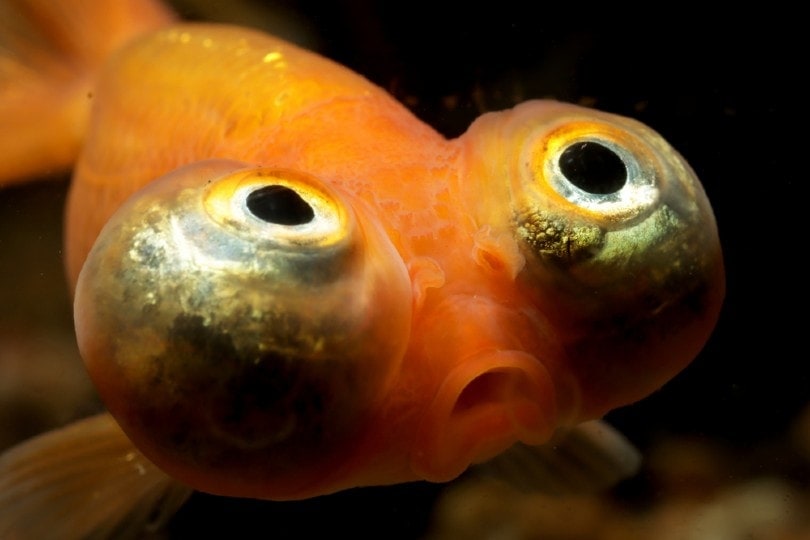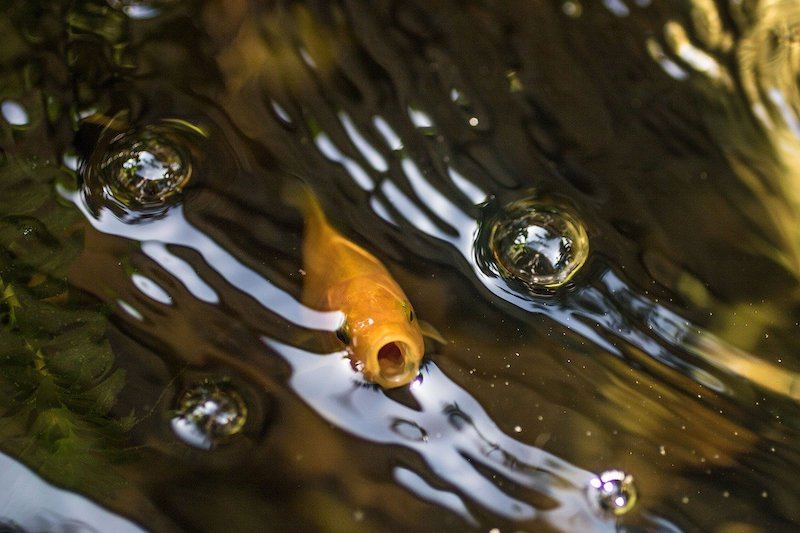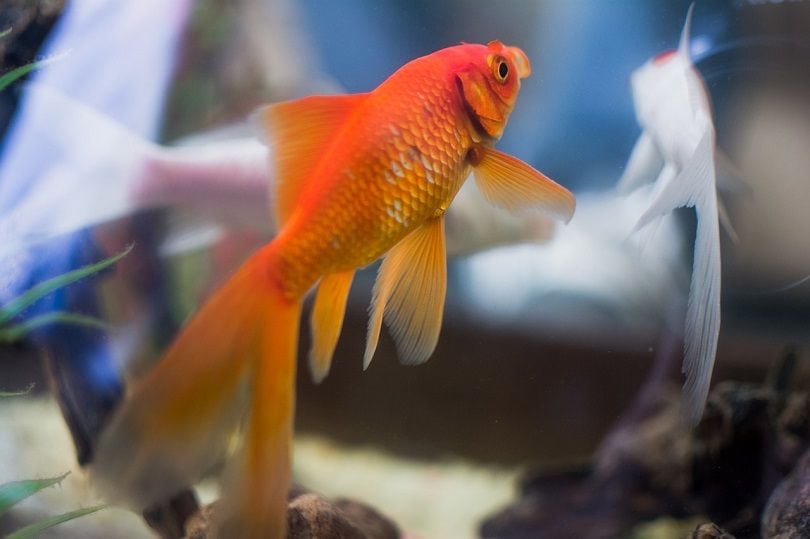How to Lower Nitrate Levels in Your Aquarium – 6 Vet-Approved Tips

Updated on
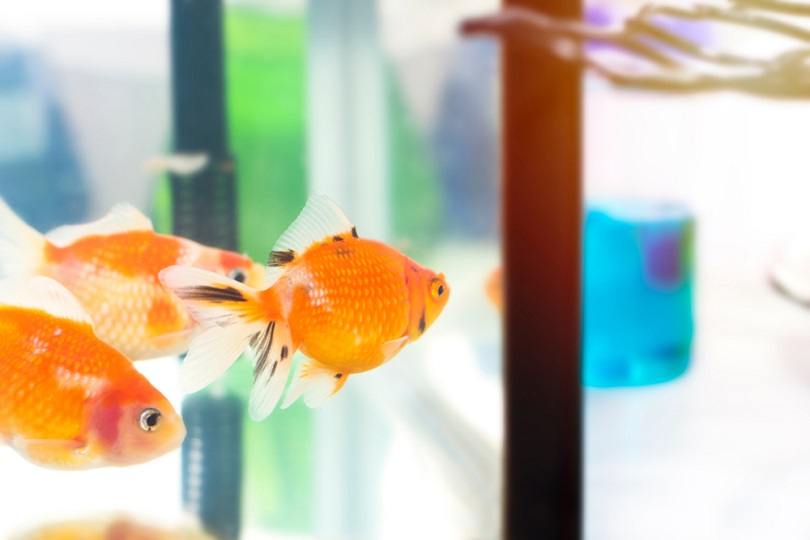
If you have a relatively new tank, or if you’ve recently added fish to your aquarium, you may have noticed your nitrate levels increasing. While some nitrates are safe in an aquarium, it’s generally recommended to keep the level below 15-20 ppm.
High nitrates can be detrimental to fish in your tank and algae loves nitrate. If given the chance, algae will gobble up the nitrate in your tank and then hold on for dear life. Algae blooms can be difficult to get under control once they start to take over. What’s more concerning is that prolonged exposure to high levels of nitrates are detrimental to fish health. Contrary to popular belief, nitrates aren’t safe for fish (though they are much safer than ammonia and nitrite). High levels of nitrate can lead to stunted growth and poor immunity.
So, what causes high nitrate levels, and how can you control them?
Causes of High Nitrates
- Detritus: Detritus is the build-up of waste from the creatures living in the aquarium as well as the decaying bodies of any fish or invertebrates that may have died in the tank. If you have hitchhikers on plants or décor, you may end up with a decaying animal you didn’t even know you had, like pond snails and hydra.
- Decaying Plants: This is like detritus, but the decaying parts of plants in your tank can increase the nitrates in your aquarium. This includes leaves that have dropped from plants that are allowed to stay in the tank and rot instead of being removed.
- Overfeeding: Overfeeding poses two problems. The first is that it increases waste from tank residents. The more they eat, the more they excrete. The second problem is that overfeeding may lead to food being missed, which will then rot, eventually adding to the nitrates in the tank. In fact, allowing food to rot in a tank is one of the traditional ways to perform a fishless tank cycle because it increases waste products in the water, encouraging the growth of nitrifying bacteria.
- Overstocking: Overstocking your tank is similar to overfeeding. You’re just increasing the amount of waste in the tank and if you aren’t managing your overstocked tank well, you will end up with a buildup of waste products.
- Tap Water: Some tap water has nitrate already in it, so you may be adding nitrate to your tank inadvertently during water changes.
Note: do not allow food to rot in an established aquarium. Rotting food will cause an ammonia spike well before a nitrate spike. An ammonia spike is very dangerous for pet fish!
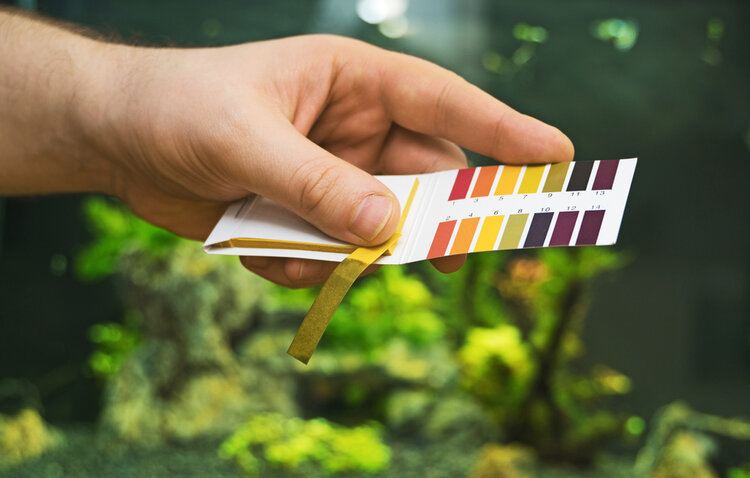
The 6 Ways to Lower Nitrate Levels in Your Aquarium
1. Water changes
Water changes are a great way to quickly reduce nitrates, as well as other toxins in the tank. Evaluate how frequently you are changing your tank water and how much water you are changing out at a time. Depending on your tank’s stocking level, you may need to perform water changes multiple times per week. A properly stocked aquarium should have a partial water change performed once a week.
2. Feed Appropriately
If you reduce the amount of food per feeding or the number of feedings per day, you will have less food waste in your tank. If you have the tank space, consider adding in fish or invertebrates that will help clean up food from the tank floor, like dojo loaches and mystery snails.
3. Adjust Stock Size
If you are keeping an overstocked tank and aren’t interested in more frequent water changes, consider decreasing how many fish you’re keeping in your tank. You can start a second tank and move some residents there once it is cycled or you can give some fish away. Local fish stores will often take fish you no longer have space for.

4. Plants
Plants LOVE nitrate! This is a great nutrient for many plants, so adding plants to your tank is probably the most efficient and beneficial way to remove nitrate from your aquarium. Plants will absorb the nitrate, as well as other things that are toxic to fish, and release oxygen into the water, improving the water quality in your tank. Duckweed, moneywort, water wisteria, and water sprite are all great options for removing nitrate in freshwater tanks.

5. Upgrade Tank
This is an alternative to restocking your existing tank. Upgrading your tank can be a reasonable fix when you don’t wish to rehome any of your pet fish. With more volume of water available, nitrates can be better diluted in the aquarium.
6. Test Your Water
Nitrates can sometimes be very annoying and never go down no matter what you do. In such a situation, it might be important to test your water source. At times, there are high amounts of nitrates in the water itself. The EPA does not recommend using water from any source with nitrates over 10 ppm; though this recommendation is for human health, it’s a very good benchmark for aquariums as well. If the source is your water, you should consider a new water source for your aquarium.
If you need help getting the water quality in your aquarium just right for your goldfish family, or just want to learn more on the subject (and more!), we recommend that you check out our best-selling book, The Truth About Goldfish.
It covers everything from water conditioners to nitrates/nitrites to tank maintenance and full access to our essential fishkeeping medicine cabinet!
In Conclusion
If you aren’t sure about nitrate levels in your tank but are struggling with algae blooms, then an aquarium test strip kit is a good option for you to see where the nitrate levels stand in your freshwater aquarium, as well as other things like pH and ammonia. These kits are also available in saltwater, reef, and pond options. Using kits like this will help you determine if your tank is properly cycled and it will give you a good idea of whether or not your tank is overstocked or your filtration is inadequate. Keeping nitrate levels under control in your tank will save you a lot of grief from fighting algae blooms and stunted fish growth.
See Also:
- How to Lower Nitrates in a Saltwater Aquarium: 15 Easy Methods
- Best Aquarium Plants To Reduce Nitrates– Reviews & Top Picks
Featured Image Credit: Suthiporn Hanchana, Shutterstock





